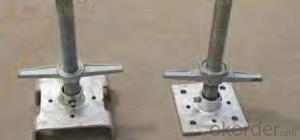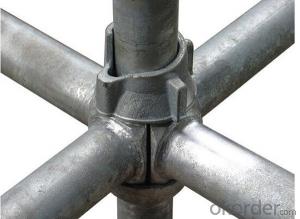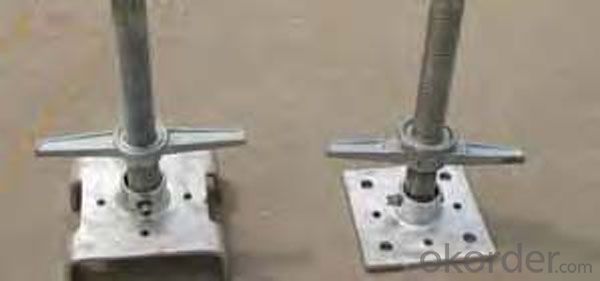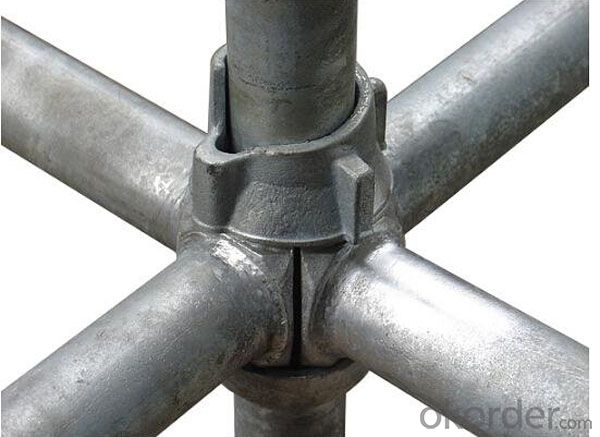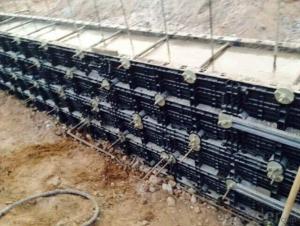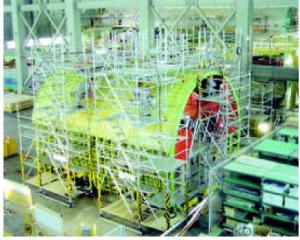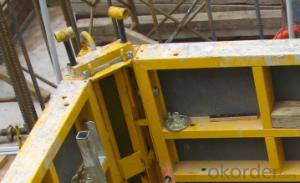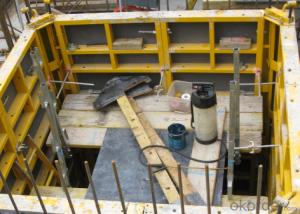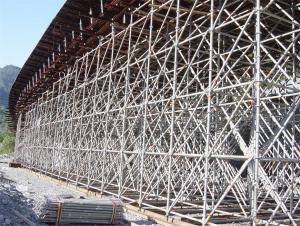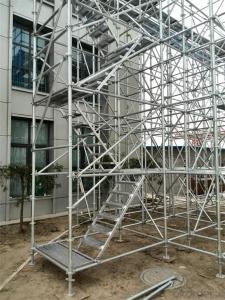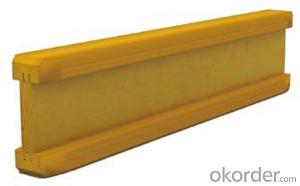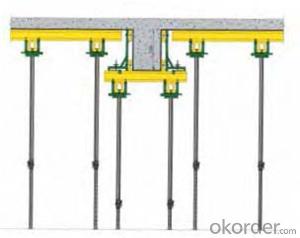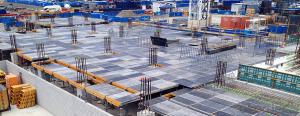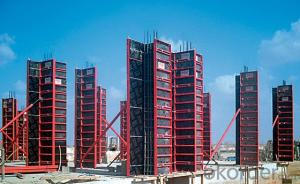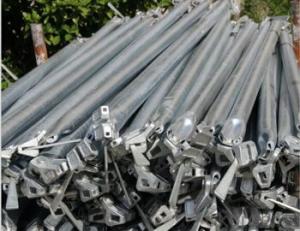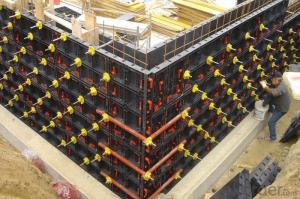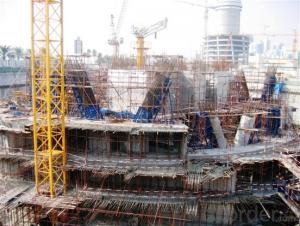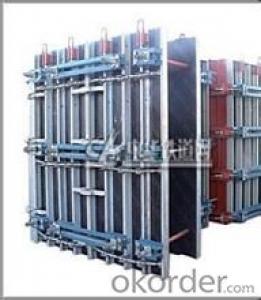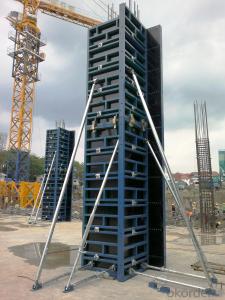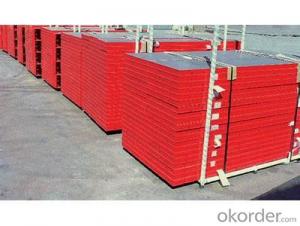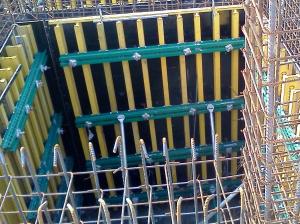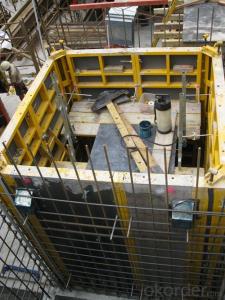Circular Column Formwork Outrigger For Scaffolding With New Design
- Loading Port:
- Tianjin
- Payment Terms:
- TT OR LC
- Min Order Qty:
- 20000 set
- Supply Capability:
- 50000 set/month
OKorder Service Pledge
OKorder Financial Service
You Might Also Like
Circular Column Formwork Outrigger For Scaffolding With New Design
Plastic Formwork Concrete Formwork Circular Column Used Scaffolding Props New Design
Developing with new technology materials, steel formworks is no longer a must in construction concrete process. More and more buildings are established with plastic formworks. And workers love this new formworks much more.
The advantages of plastic formworks:
1.First of all--light
Yes it is the first advantage of plastic formwork. It wins the great praise of both contractors and workers.
The biggest panel is 120×1500px,weights 10.5kg only. It can be lift and set up by one person easily, which means there is no need for cranes on site.Saves a lot of cost and time.
2.Easy set up
Different size of panels can firmly locked by simply turn the special handles to 90 degree. The Panels has rib on the back, which makes the system need not traditional wood blocks and nails. The panels have holes to fit tie rod, guarantee the strength of the whole system.
3.Modularity
Modular formworks composed by different size of panels..
4.Strength
The handles are made by high strength Nilon, each panel locked by at least 4 handles, which makes the whole system strong enough to pour 1000px walls.
5.Environment friendly
The system needs no cut and nail due to the variety size. Also it needs nearly no wood. The material can be recycled after broken, so it will not pollute the environment.
6.Consequent
Concrete does not stick to plastic formwork, thus the panels need no oil before using, and can be cleaned simply by water. The surface of the wall which build by modular formwork is smooth and without rework.
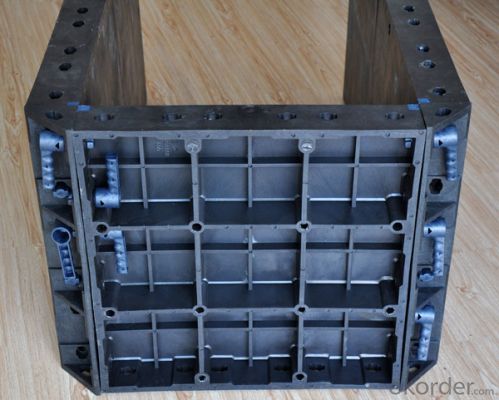
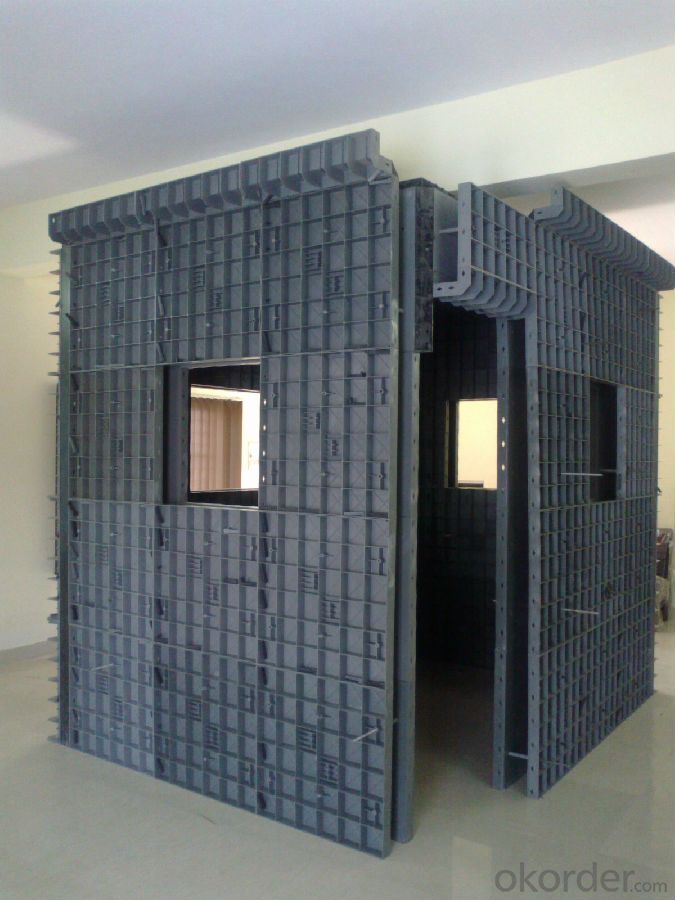
Advantage
* Good loading capacity
* Easy to assemble and dismantle
* Stable and durable thanks to its structual design & automatic welding quality
* Customized solution helps you work safe, save cost and convenient
* Excellent quality for formwork & scaffolding with wide choices
Packing
in bulk or in bundle, or as requested
Shipping
15-20 Days.
Normally small orders, it needs just 15-20 business days to the port. For goods with stock, it would be even shoter.
Other scaffolding & formwork products:
(1) Scaffolding System:
Including Ringlock Scaffolding System and accessories; Cuplock Scaffolding System and accessories; Kwikstage Scaffolding System and accessories; Haki Scaffolding System and accessories;
(2) Scaffolding Frame & Accessories:
Including Walk Through Frame Scaffolding; Ladder Frame Scaffolding; Accessories; we also can make scaffolding according to your samples or drawings.
(3) Scaffolding Couplers/Clamps:
We can produce all kinds of forged and pressed couplers, including British type couplers, American type couplers, German type couplers, Italian type couplers ,fence couplers, BRC coplers and so on. We also can produce according to your drawings or samples.
FAQ
Why Us?
We are one of the Top 500 in the world, largest construction materials supplier in China. Also we are a state-owned company and respond to every customer with large and also small orders.
We own professional manufacturers with powerful producing capacity.
Extensive and comprehensive quality control system
Excellent products with competitive prices.
Efficient services in pre and after sale.
Full energy with affluent experience team.
- Q: Channel frame and reinforced concrete structure which is more shockproof
- However, the landlord said the channel frame, not necessarily! Because the channel frame must not be a regular steel structure design
- Q: Can steel frame formwork be used for both reinforced and non-reinforced concrete structures?
- Yes, steel frame formwork can be used for both reinforced and non-reinforced concrete structures. The adaptability and strength of steel make it suitable for various construction projects, regardless of whether reinforcement is required or not.
- Q: What are the different types of safety systems used with steel frame formwork?
- There are several different types of safety systems that are commonly used with steel frame formwork. These systems are designed to ensure the safety of workers while they are working with the formwork and prevent accidents or injuries. One of the most common safety systems used with steel frame formwork is fall protection. This can include safety harnesses, lanyards, and anchor points that are designed to prevent workers from falling from heights. Fall protection systems are essential when working with steel frame formwork, as workers are often required to work at elevated heights. Another type of safety system used with steel frame formwork is edge protection. This can include guardrails or barriers that are installed around the edges of the formwork to prevent workers from accidentally falling over the edge. Edge protection systems are important to ensure the safety of workers and prevent them from being exposed to fall hazards. Additionally, access systems are often used with steel frame formwork to provide safe and convenient access for workers. This can include staircases, ladders, or platforms that are securely installed to allow workers to access different levels of the formwork structure. Access systems should be designed and installed properly to ensure the safety of workers while they are entering or exiting the formwork. Furthermore, safety signage and warning systems are also commonly used with steel frame formwork. These can include clear and visible signs that indicate potential hazards, such as electrical or confined space dangers. Warning systems can also include audible or visual alarms that alert workers to potential risks or emergencies. Safety signage and warning systems are important for maintaining a safe working environment and ensuring that workers are aware of potential hazards. Lastly, personal protective equipment (PPE) is an essential safety system used with steel frame formwork. This includes items such as hard hats, safety boots, gloves, and eye protection, which are worn by workers to protect themselves from potential hazards. PPE should be provided to all workers and used in accordance with relevant safety regulations and guidelines. Overall, the different types of safety systems used with steel frame formwork are designed to ensure the safety of workers and prevent accidents or injuries. Fall protection, edge protection, access systems, safety signage and warning systems, and personal protective equipment all play crucial roles in maintaining a safe working environment.
- Q: How does steel frame formwork handle different types of reinforcement?
- Steel frame formwork is a versatile and efficient system that can easily handle different types of reinforcement in construction projects. The key advantage of steel frame formwork is its flexibility, allowing for the integration of various types of reinforcement, such as steel bars or mesh, without compromising the structural integrity of the formwork. The steel frame formwork is designed to accommodate and support the weight and pressure exerted by the reinforcement materials. It provides a sturdy and stable platform for the placement and installation of the reinforcement, ensuring that it remains in the desired position throughout the construction process. The formwork system also allows for easy adjustment and modification to accommodate different reinforcement configurations. The steel frames can be easily adapted to the required shape and size, allowing for the inclusion of different reinforcement layouts, such as vertical or horizontal bars, as well as various reinforcement spacings. Moreover, the steel frame formwork offers excellent durability and strength, which is crucial for handling different types of reinforcement. It can withstand the high loads and pressures exerted during concrete pouring and curing, ensuring that the reinforcement remains securely in place. Overall, the steel frame formwork system is well-equipped to handle various types of reinforcement in construction projects. Its flexibility, adaptability, and strength make it an ideal choice for contractors and engineers seeking to efficiently and effectively incorporate different reinforcement configurations into their construction projects.
- Q: Does steel frame formwork require any additional reinforcement?
- Steel frame formwork does not need extra reinforcement, as it is specifically engineered to be robust and enduring, capable of enduring the immense pressures and forces involved in concrete placement. The steel frame ensures adequate support and stability for the formwork system, thus obviating the requirement for supplementary reinforcement. Furthermore, steel frame formwork is highly adaptable and can be effortlessly modified and reused for various projects, contributing to its cost-effectiveness and efficacy in construction.
- Q: How is the steel frame formwork secured to the ground?
- Securing the steel frame formwork to the ground involves various methods. Among them, ground anchors or stakes are commonly used. These anchors are driven into the ground and attached to the formwork, providing stability and preventing any shifting or movement during the concrete pouring and curing process. Furthermore, tie rods or braces can be utilized to further secure the formwork. These rods or braces connect the formwork to nearby structures or anchor points, ensuring its firm placement. The choice of securing method for the steel frame formwork depends on the project's requirements and the soil conditions at the construction site.
- Q: Airtight door and all glass steel frame door which cost is high
- Glass fiber reinforced plastic doors on your glass fiber reinforced plastic material
- Q: Can steel frame formwork be used in retrofitting and renovation projects?
- Yes, steel frame formwork can be used in retrofitting and renovation projects. Steel frame formwork is a versatile and durable system that can be easily adjusted and adapted to fit various project requirements. Its strength and stability make it suitable for retrofitting and renovation projects where a high load-bearing capacity is necessary. Additionally, the reusability of steel formwork makes it a cost-effective solution for multiple projects.
- Q: How does steel frame formwork accommodate for different concrete mix designs?
- Steel frame formwork can accommodate for different concrete mix designs by allowing for easy adjustment of the formwork panels. This means that the size and shape of the formwork can be modified to accommodate variations in the concrete mix design, such as different slump levels or aggregate sizes. Additionally, the steel frame formwork provides stability and strength, ensuring that it can withstand the pressure exerted by different concrete mix designs during pouring and curing.
- Q: Can steel frame formwork be used for both monolithic and composite concrete structures?
- Yes, steel frame formwork can be used for both monolithic and composite concrete structures. Steel frame formwork is versatile and can easily be adjusted to accommodate the different requirements and complexities of both types of structures. It provides a strong and rigid framework that can withstand the pressure and weight of concrete, making it suitable for constructing monolithic structures. Additionally, the steel frame formwork can also be used in composite structures where concrete is combined with other materials such as steel or timber. Overall, steel frame formwork is a flexible and reliable choice for various types of concrete structures.
Send your message to us
Circular Column Formwork Outrigger For Scaffolding With New Design
- Loading Port:
- Tianjin
- Payment Terms:
- TT OR LC
- Min Order Qty:
- 20000 set
- Supply Capability:
- 50000 set/month
OKorder Service Pledge
OKorder Financial Service
Similar products
Hot products
Hot Searches
Related keywords
